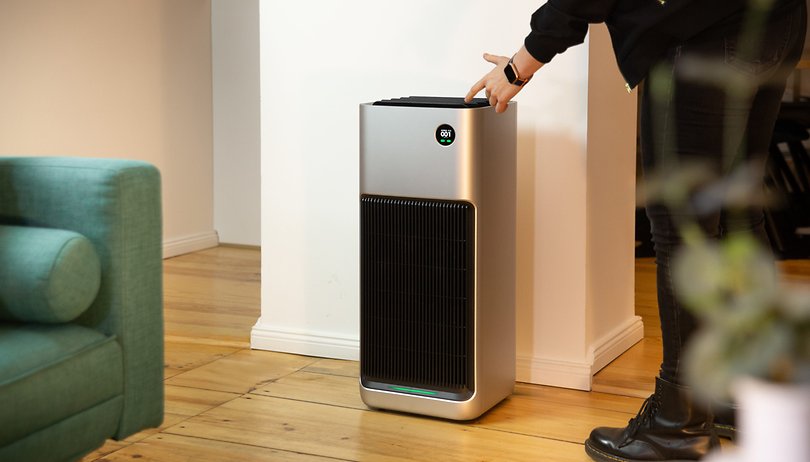As every effort can make an impactful statement about sustainability in our world, selecting green products for your home, refusing plastic straws and participating in Meatless Mondays are all great ways to lead an eco-friendly life. One additional way is using smart air purifiers.
Smart air purifiers differ from their standard counterparts in that they can be controlled via app or virtual assistants such as Alexa and Google Assistant, making them much simpler to operate in any household environment. Read on for tips on selecting one for your home!
1. Reduced Carbon Footprint
Air pollution is one of the greatest challenges we all face today, caused by human activity, industrialization and chemical exposure. High levels of indoor pollutants have been linked with numerous illnesses and symptoms including respiratory conditions, dizziness and fatigue – smart air purifiers can help alleviate this problem by decreasing levels of pollutants present.
Smart air purifiers often feature built-in sensors that detect pollutants in your space and take appropriate action to remove them. Furthermore, these devices often utilize energy efficient motors and filters that require less energy for operation than traditional models, thus helping reduce your carbon footprint and save you money on electricity bills.
Smart air purifiers typically connect to an app for real-time information on indoor air quality, including daily readings and device operation history. Furthermore, many models also enable filter monitoring so you’re reminded when it’s time for replacements.
Some smart air purifiers can be controlled using voice assistants like Apple HomeKit or Alexa, enabling you to take full control from your phone – switching it on or off, changing its mode, scheduling it as part of a routine or schedule you’ve established with other connected devices in your home, even scheduling cleaning schedules with other smart home gadgets!
Filter reset indicators can also be found on certain models and provide an early reminder to replace filters when they reach wear threshold. This feature helps avoid wasteful spending as you won’t need to remember manually when and where they need replacing.
2. Improved Health
Air pollution isn’t limited to your lungs: Chemicals, gases and particulates from pollution can have adverse impacts on your heart, brain and immune system as well. An air purifier can help keep these pollutants at bay by filtering through the atmosphere and collecting them with filters before reaching your lungs and triggering irritation and asthma attacks. Irritating substances include dust particles, pet dander, cigarette smoke vehicle exhaust fumes or even cooking fumes which all need filtered out!
Not only can some units filter out dust particles, they may also break down volatile organic compounds (VOCs) such as formaldehyde and acetone released from products like wood glues and paints. Some models can even come equipped with carbon filters which capture these odors safely chemically before turning them into carbon dioxide and water.
Many top smart purifiers include features tailored specifically for allergy and asthma sufferers, like the Levoit model with an air inlet specially designed to collect pet hair (I tested it myself living in a house filled with cats!). Furthermore, this unit can monitor air quality outside by changing fan speeds depending on outdoor pollution levels; additionally, its sleep mode helps you fall asleep faster by lowering noise levels, while an eco mode activates when no pollutants have been detected for 30 minutes or more.
Some smart air purifiers offer added customization with multiple modes that let you set them according to time of day and use, for instance, Blueair’s app can allow you to set it for when you arrive home so it’s already running when you arrive home. Plus, its filter replacement alert and smart plug support means it provides simple on/off control!
Also Read: 5 Surefire Signs You Need Major Appliance Repair in London Ontario
3. Less Waste
The Internet of Things has given us the ability to fill our homes with smart gadgets ranging from locks and coffee mugs, to air purifiers. While some applications for certain devices may be questionable, adding an air purifier to your collection of smart home devices should definitely be on the agenda.
Many of the smart air purifiers we tested feature an air quality sensor connected to WiFi that enables you to monitor indoor air quality on both your phone and the machine’s display screens. Furthermore, many have customizable schedules so that you can program when the machine will power on/off or activate specific modes.
As an added benefit, many of the smart air purifiers we tested come equipped with voice assistant settings so you can use virtual assistants like Amazon Alexa or Siri to quickly change settings on their air purifier without manually doing it yourself. Not only is this convenient when forgetting to change them yourself manually; but it can also be integrated with scenes and routines you have set up on your smart home hub.
While not essential, any smart air purifier you buy should feature HEPA and activated charcoal filters – these are the most reliable filters to reduce air pollutants which may contribute to health issues. If in doubt about what filters your potential purchase contains, review its performance on Google and Apple app stores to gain more insight.
Some smart air purifiers go beyond standard monitoring and customizable schedules to include advanced sensors that can detect specific pollutant events like cigarette smoke or strongly-scented cleaning products, making these purifiers invaluable in areas with heavy vehicular traffic; such advanced sensors help avoid exposure to pollutants which might otherwise enter their home from outside sources. This feature can help avoid exposure from outside sources that might otherwise enter through windows and doorways into your home, saving lives in turn!
4. Enhanced Energy Efficiency
Smart air purifiers can save both energy and money in several ways. First, they use less power because they’re not constantly running; secondly, most smart air purifiers feature sensors to monitor indoor air quality index (AQI), an indicator of air pollutants found within your home environment; those equipped with this type of sensor often come equipped with lights which illuminate red, yellow or green depending on their current AQI readings.
Control a smart air purifier using its mobile app from its manufacturer or integration with voice assistants like Alexa on your phone for convenient and easy control. You can adjust fan and mode settings, set schedules and receive filter replacement reminders easily – though note that some features only work once they have been linked up to an smartphone.
IKEA offers one smart air purifier model with an app that displays real-time air quality index readings and has a voice activated sleep setting, auto fan speed adjustment based on AQI readings, high efficiency motor and filter that remove allergens, viruses, VOC gases and smoke particles in your home environment.
IKEA smart air purifiers’ app also allows users to monitor both indoor and outdoor air quality, set schedules, receive filter replacement reminders, and more. In addition, this device includes a remote with buttons and display that shows current AQI values as well as built-in speaker that supports Amazon Alexa voice command functions.
5. Reduced Noise
As you shop through home tech products that promise to make life simpler, it’s essential that you consider how these gadgets may impact the environment. One item which combines convenience and eco-friendliness is the smart air purifier.
Most smart air purifiers are WiFi-enabled and include an app to track real-time and historical trends in indoor air quality, detect specific toxins such as smoke, dust or pollen and warn you when filter changes are due or when indoor air quality has dropped below your preferred thresholds. Some models even provide alerts for when filter changes should take place or indoor air quality has decreased below desired thresholds.
Smart air purifiers also feature built-in voice assistant support and allow users to create customized ‘Smart Scenes’, which adjust your device according to your schedule, such as switching into sleep mode when bedtime approaches or running it at a lower fan speed during the day.
Smart air purifiers typically utilize low wattage electricity (depending on which model you select) and consume minimal energy during normal operation. You can check how much power is consumed by each model by looking at its specification sheet or manual, but if your electricity prices are particularly high at home it would be wise to seek a unit which will reduce costs on your utility bill.
Yoona Wagener is an expert in smart tech who has written extensively about various connected products for The Spruce, from thermostats and electric toothbrushes to thermostats and smart thermostats. Her insights from testing devices in The Lab, combined with feedback from long-term home testers, allow her to provide recommendations of which are the best products available on the market.




